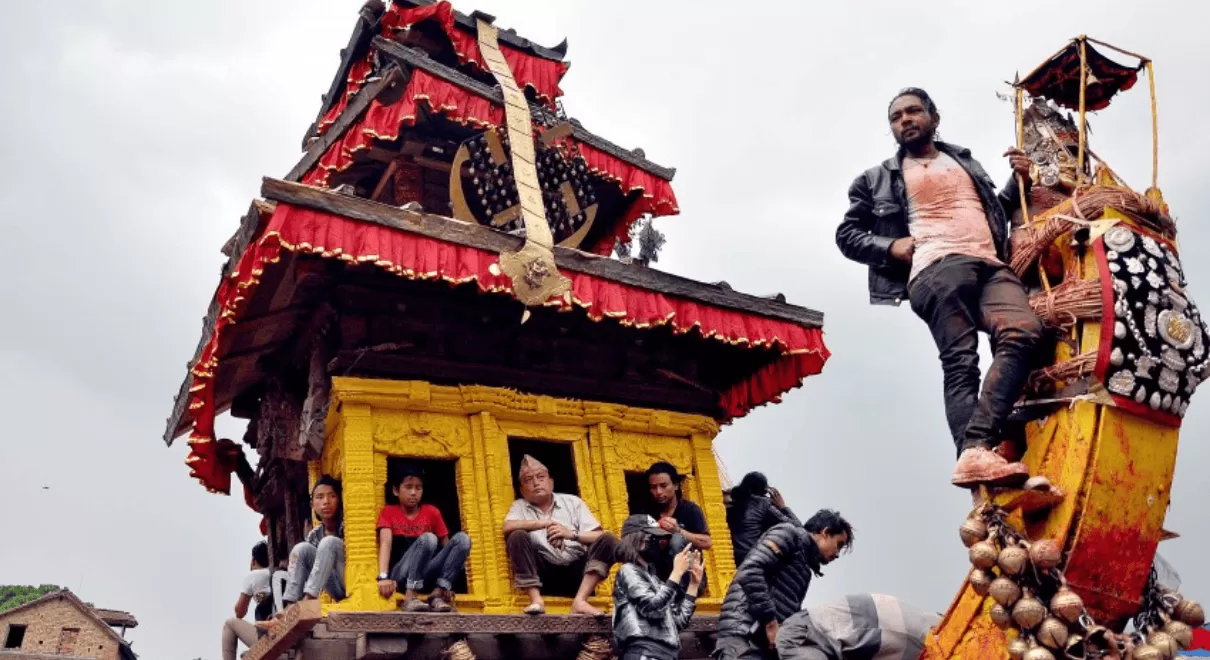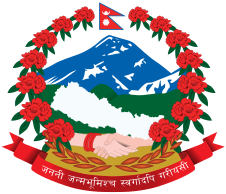Biska Jatra

Biska Jatra is one of Bhaktapur's most well-known cultural heritages. Celebrated for nine days and eight nights in all, its importance has risen significantly in a relatively recent period.
In Bhaktapur, Biska Jatra is an exuberant manifestation of ancient Newar culture—an elaborate amalgam of ritual, chariot processions, communal bonding, and devotion. Rooted in the Malla-era traditions, it celebrates a community's prosperity, renewal, and identity and adds to the city's living heritage with animated and sacred performances.
Historical Origins & Development
- At first, the festival only included Nakiju Ajima (Bhadrakālī) and lasted two days.
- When the Mallas were in power, some rituals for Kashi Vishwanath Bhairava were incorporated, and slowly but surely, the festival expanded to include other deities, thereby becoming a much longer and more developed festival. These iterations throughout subsequent rulers, like Jitamitra and Bhupatindra Malla, evolved into what we currently know as the nine-day Biska Jatra.
Festival Rituals: Detailed Day-by-Day
Preparations & Chariot Construction
- When artisan communities start to make chariots for Bhairavnath (Bhail Khah) and Bhadrakali (Nakiju Khachha) in Mari (Taumadhi) in mid‑Chaitra.
- Both make chariots as three-tier pagoda-style wooden structures that are painted and sealed upon their completion.
Day 1: Dya Khvah Vijayaigu
- The first chariot of Bhadrkali and the second chariot of Bhairavnath.
- Right before the pull, Bhairav Naikes perform the sacrificial rites at the temple of Bhairavnath and then feast all together.
- Bhairavnath's idol will sit inside Bhail Khah with some offerings acquired in Hanumandhoka (such as Khadga and Taleju Bhavani).
- Fifteen people will pull the chariot (1 jusiju, 6 bhail nikes, 4 carpenters, and 4 chaguthi) with ten ropes (6 in front and 4 in back), while thousands of devotees chant/make the rhythm (e.g., Hoste, Hanse...), while the two neighborhood teams (upper & lower tol) will pull the rope—whoever is at the front pulls the chariot down the road and wins control of the chariot.
- The route goes from Mari to Gahhiti to Nasmana to Vansagopal to Tekhapukhu to Dattatray to Golmarhi until it reaches Gahhiti tol to end the day. The day ends with each deity seated in the temple in what is called a dyahkwan bijakegu ritual.
Day 2: Bhadrakali’s chariot is moved to Azima Dyochen, which is the Bhadrakali temple at Khalatol, Gahhiti.
Day 3: Guthi Sansthan performs sacrifices to Bhairavnath in Gahhiti, distributing the meat as prasad to Lakulache locals, who are referred to as Syahko Tyahko.
Day 4 (Chaitra end)/Last day of the old year
- Morning: Handless Yosin Dyah (Lhamru Mha) erected in Talaq (potter village).
- Evening: 55 cubit Yosin Dyah erected Yosinkhel after a sheep sacrifice by Bhairav Nikes.
- The Dyah is worshipped and raised with eight ropes, which represent the Astadmatrika. It is wrapped with new cloth at the upper parts and arms, and twin flags (Virdhvaja/Vishwadhvaja) are flown on the Dyah's top, which are believed to attract Navadurga at the time of erection.
Day 5 (Nepali New Year – 1 Baisakh)
- Giant Yosin Dyah is pulled down (Dyah Lwakigu).
- The ritual pull of Bhairavnath's and Bhadrakali's chariots intersects at Khala Tol.
- Dumaju Devi Jatra, or Shatruhanta Jatra (which wards off enemies), is performed in the evening. The procession for Barahi Devi is being performed in the evening as well (which is called Thimpwa Jatra) in Vansagopal Tol.
Days 6-8
Day 6: Procession of Mahakali and Mahalaxmi
Day 7: Procession of Brahmayani and Maheshwari (Musyapwa Jatra)
Day 8: Worship of all city deities (Dya: Svanga Biigu) throughout Bhaktapur
Day 9 (5 Baisakh - Festival conclusion)
- Final pulling of the chariots of Bhairavnath and Bhadrakali along their original routes (or Dyah Thaha Bijayaigu in Nepali).
- The Talaq Yosin Dyah was also toppled in the morning.
- The city is bedecked for the entirety of the festival in representations of the Ashtamatrika goddesses, Ganesha, Bhairav, Kumari, and others.
Legends and Symbolism
- There is an early myth that ties the festival to Nakiju Azima. One is that Kashi Vishwanath Bhairav was watching it and was beheaded by tantriks. He was enshrined at Bhaktapur's Mari Tol, which is where both the Bhairav worship began and the festival spread.
- Historian Purushottam Lochan Shrestha traces the term "Biska" to Vishwa Ketu in medieval Tamsukpatra as well as in court documents. Over the years, as it has traveled in Newari, Vishwaketu became Biskah, which now, through slang speech, has diverted from its traditional form while staying true to the Nepali form.
- Unlike the common thought of the festival being about 'killing snakes"—the "B" is not for snake, and "syat" is not killed. It is faithfully about Bhairav and his Shakti, Bhadrakali—whose flags rise above the Yosin Dyah as a symbol of both, not serpent mythology.
Thimi Festival: Swinikh (Sindur) Jatra
- 2 Baisakh is the start of festival season for devotees at Balkumari Temple, located in Madhyapur Thimi (Swinikh (32-khat) Jatra or Sindur Jatra (Suthsiya/Morning Jatra)).
- Devotees throw vermilion (sindur) at one another. Historically, 32 local khats in Thimi took part, and now there are only 19.
- The procession starts at specified places and moves through certain neighborhoods, such as Chapacho, Nigupukhu, and Marutol, and culminates at Laiku Tol.
- Other festivals in Thimi include Dakshin Barahi Jatra, Siddhikali Gana Jatra, and the tongue-piercing festival (2 Baisakh), when a youth of the Shrestha caste gets his tongue pierced and performs ceremonial performances before the deity is taken to immerse in the city.


.png)
.png)






